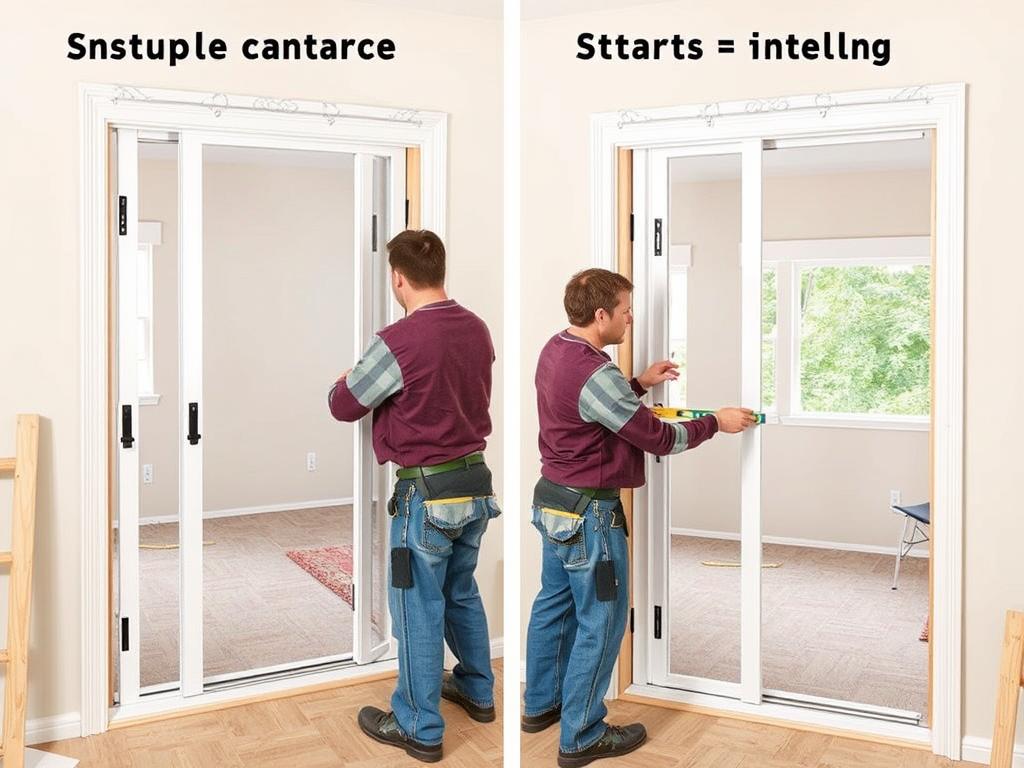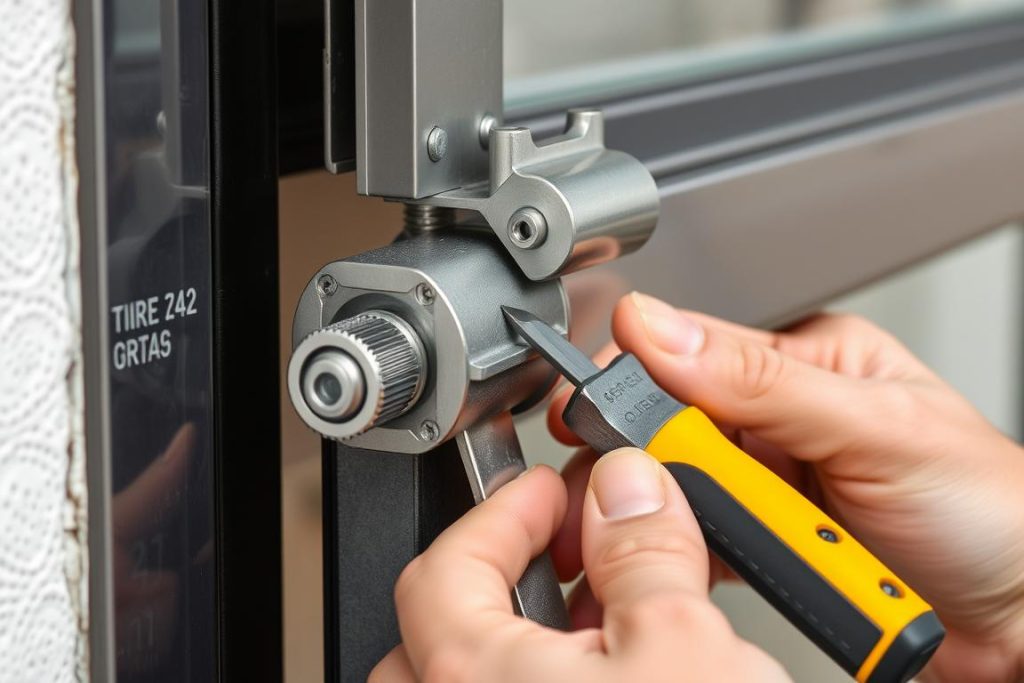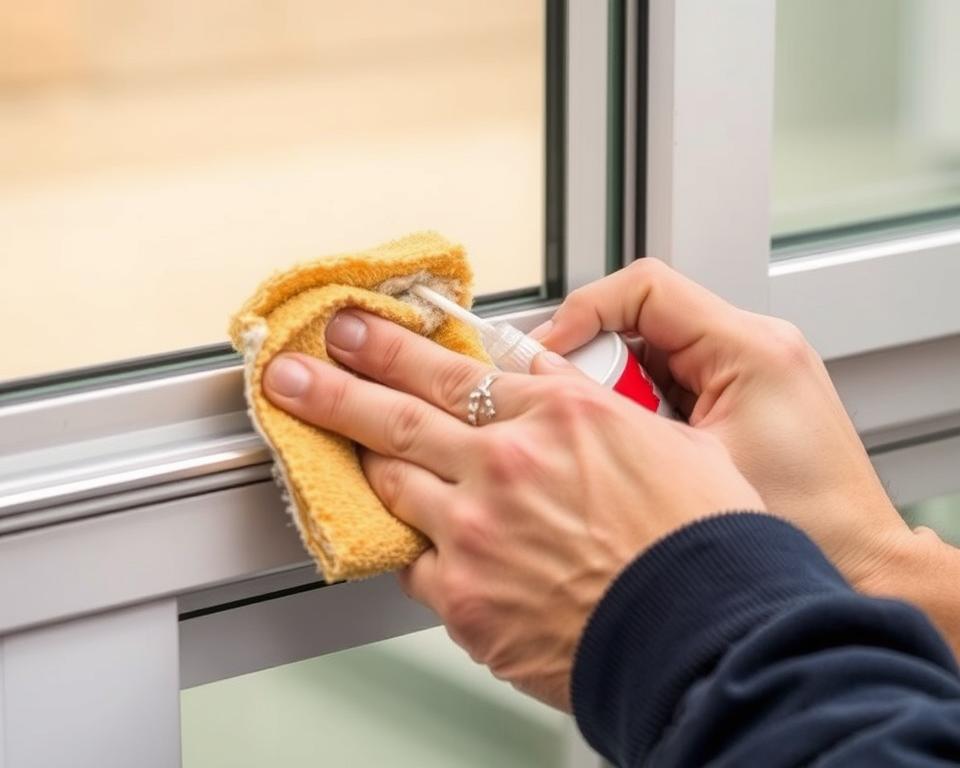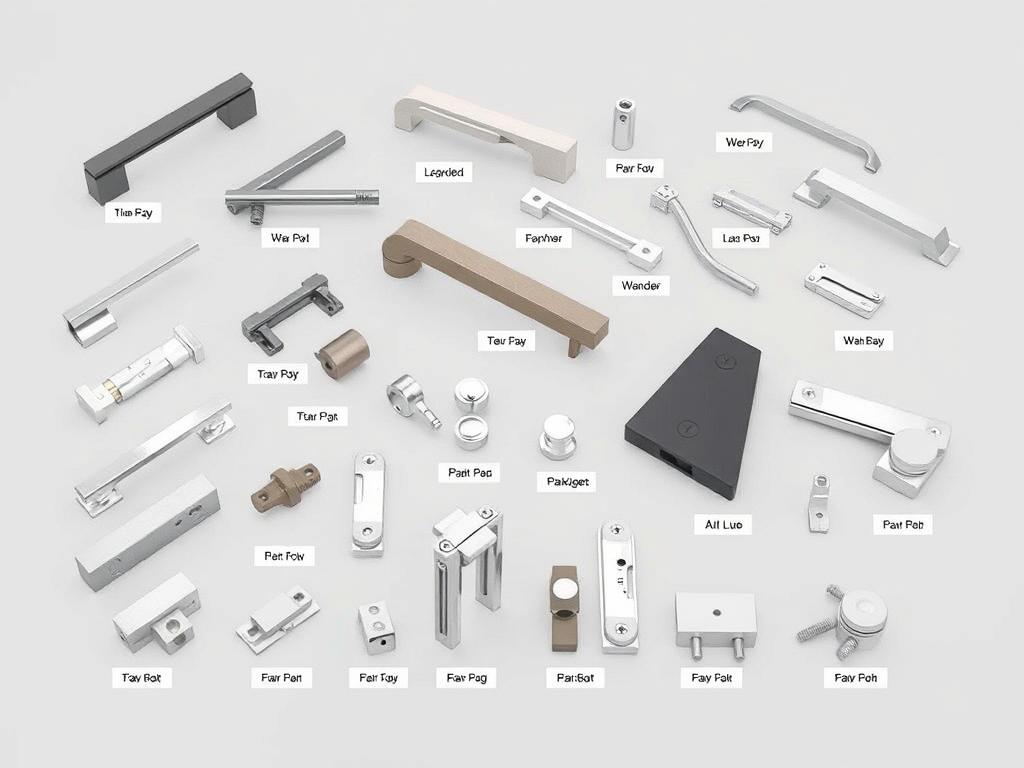Benefits of Modern Sliding Doors
Space Optimisation & Aesthetic Appeal
Unlike hinged doors that require clearance space to open, sliding doors operate parallel to your wall, making them perfect for areas with limited space. Modern aluminium sliding doors feature sleek frames and expansive glass panels that maximise natural light and create an illusion of larger living areas. They serve as stunning design elements while providing practical functionality for Australian homes.
Energy Efficiency & Comfort
Today’s energy-efficient sliding doors incorporate advanced features like thermal breaks, double glazing, and quality seals to minimise heat transfer. These innovations help maintain comfortable indoor temperatures year-round, reducing reliance on heating and cooling systems. For maximum efficiency, look for doors with Low-E glass and argon gas fills that meet Australian standards for energy performance.
Looking for Quality Aluminium Sliding Doors?
Brightview Aluminium offers premium sliding door solutions designed specifically for Australian conditions. Our doors combine aesthetic appeal with superior energy efficiency and durability.
Sliding Door Installation Guide
Installing sliding doors requires careful planning and precise execution. While professional installation is recommended for optimal performance, this step-by-step guide will help you understand the process or tackle it yourself if you have advanced DIY skills.
Essential Tools & Materials
Tools Required:
- Tape measure and spirit level
- Power drill with appropriate bits
- Screwdriver set (Phillips and flathead)
- Caulking gun and silicone sealant
- Rubber mallet
- Utility knife
- Pry bar
Materials Needed:
- Sliding door unit (frame, glass panels, tracks)
- Weatherproof flashing
- Shims
- Fasteners (screws appropriate for your wall type)
- Expanding foam insulation
- Weather stripping
Installation Process
- Measure and Prepare the Opening: Ensure your rough opening is approximately 20mm wider and 10mm taller than the door frame. Check that the floor is level and the opening is square.
- Apply Flashing: Install weatherproof flashing around the perimeter of the opening to prevent water infiltration.
- Position the Frame: With assistance, carefully lift the frame into the opening. Use shims to centre it and ensure it’s level and plumb.
- Secure the Frame: Once properly positioned, fasten the frame to the structure using appropriate screws. Start with the top corners, checking level and plumb after each fastener.
- Install the Fixed Panel: Insert the fixed panel into the track and secure according to manufacturer instructions.
- Install the Sliding Panel: Place the sliding panel onto the bottom track, then tilt it up into the head track.
- Add Hardware: Install handles, locks, and other hardware components according to the manufacturer’s guidelines.
- Seal and Insulate: Apply silicone sealant around the exterior perimeter and use expanding foam insulation for gaps between the frame and rough opening.
- Test Operation: Check that the door slides smoothly and locks securely. Make any necessary adjustments to rollers or strike plates.
Safety Tip: Sliding door installation often requires handling large, heavy glass panels. Always work with at least one assistant and wear appropriate safety gear including gloves and safety glasses.
Need Professional Installation?
While DIY installation is possible, professional installation ensures optimal performance and warranty protection. Brightview Aluminium offers expert installation services throughout Australia.
Common Sliding Door Issues & Repairs
Even the highest quality sliding doors may develop issues over time. Here’s how to diagnose and fix the most common problems:
Stuck or Difficult Operation
Cause: Dirt and debris in tracks, damaged rollers, or misalignment.
Solution: Clean tracks thoroughly with a vacuum and stiff brush. Check rollers for damage and replace if necessary. Adjust roller height using the adjustment screws typically located at the bottom of the sliding panel.
Air Leaks & Drafts
Cause: Worn weatherstripping, gaps in seals, or frame misalignment.
Solution: Replace damaged weatherstripping. Apply silicone caulk to seal gaps around the frame. Check that the door is properly aligned and adjust as needed to ensure even contact with seals.
Lock Problems
Cause: Misaligned strike plate, worn components, or accumulated dirt.
Solution: Clean lock mechanism with compressed air and lubricant. Adjust strike plate position if the lock isn’t engaging properly. Replace worn hardware if cleaning and adjustment don’t resolve the issue.
Advanced Sliding Door Repairs
Replacing Rollers
Worn rollers are a common cause of difficult operation. To replace them:
- Remove the sliding panel by lifting it up and tilting the bottom out
- Locate the roller assemblies at the bottom of the panel
- Remove screws securing the old rollers
- Install new rollers of the same type and size
- Reinstall the panel and adjust roller height for smooth operation
Fixing Misaligned Tracks
Track misalignment can cause binding and operational issues:
- Check if the track is bent or damaged
- Use a rubber mallet to carefully reshape minor bends
- For severe damage, the track may need replacement
- Ensure the track is securely fastened to the frame
- Verify the track is level along its entire length
“Most sliding door issues can be resolved with basic tools and a methodical approach. The key is identifying the root cause rather than just treating symptoms.”
Essential Sliding Door Maintenance
Regular maintenance extends the life of your sliding doors and ensures smooth operation. Implement this quarterly maintenance routine to keep your doors in optimal condition:
Track Cleaning & Lubrication
The track is the most critical component requiring regular maintenance:
- Vacuum tracks to remove loose debris
- Use a stiff brush to dislodge stubborn dirt
- Wipe clean with a damp cloth
- Apply a silicone-based lubricant sparingly to the track
- Avoid WD-40 or oil-based products that attract dust
Glass & Frame Care
Proper cleaning preserves appearance and functionality:
- Clean glass with a vinegar-water solution or commercial glass cleaner
- Wipe aluminium frames with mild soapy water
- Rinse thoroughly to prevent soap residue
- Inspect for signs of corrosion, especially in coastal areas
- Apply a protective wax to aluminium frames annually in harsh environments
Weatherproofing & Seals
Maintaining seals prevents energy loss and water infiltration:
- Inspect weatherstripping for wear or damage
- Clean rubber seals with mild soap solution
- Apply silicone spray to rubber components to prevent drying and cracking
- Check and renew exterior caulking as needed
- Test for drafts using a candle or incense stick on windy days
Pro Tip: Create a maintenance calendar reminder for your sliding doors. Quarterly maintenance takes just 15-20 minutes but can prevent costly repairs and extend door lifespan by years.
Maximising Energy Efficiency
Sliding doors can significantly impact your home’s thermal performance. Here’s how to optimise their energy efficiency:
Double Glazing Benefits
Double glazed sliding doors provide superior insulation by creating an air pocket between two glass panes. This design reduces heat transfer by up to 70% compared to single glazing. For maximum efficiency, look for units with Low-E glass and argon gas fills that meet Australian standards for energy performance.
Sealing & Weatherstripping
Even the best doors lose efficiency with poor sealing. Regularly inspect and replace weatherstripping to maintain an airtight seal. Consider adding brush seals to the bottom track for additional protection against drafts and dust infiltration.
Window Coverings
Strategic use of curtains, blinds, or external shading can enhance energy performance:
- Heavy curtains reduce heat loss in winter
- External awnings block summer heat before it reaches the glass
- Reflective blinds redirect sunlight away during hot periods
- Cellular shades provide additional insulation
Upgrade to Energy-Efficient Sliding Doors
Ready to reduce your energy bills? Brightview Aluminium offers energy-efficient sliding door solutions with double glazing, thermal breaks, and superior sealing systems.
Sliding Door Hardware Options
Quality hardware enhances security, functionality, and aesthetics. Here’s what to consider when selecting or upgrading sliding door hardware:
Handles & Locks
Modern sliding door hardware offers both security and style:
Standard Options:
- Mortice locks with key cylinders
- D-handles with integrated locks
- Flush pull handles for minimalist designs
- Lever handles for easier operation
Security Enhancements:
- Multi-point locking systems
- Keyed alike options for convenience
- Security pins for additional protection
- Smart locks with keyless entry
Rollers & Tracks
The roller system determines how smoothly your door operates:
- Stainless steel rollers offer superior durability and corrosion resistance
- Ball-bearing rollers provide smoother operation under heavy loads
- Adjustable rollers allow fine-tuning of door height and alignment
- Tandem rollers distribute weight for easier operation of large panels
Screens & Security Mesh
Enhance functionality with these additions:
- Standard flyscreen doors for insect protection
- Security mesh screens for added protection
- Retractable screens that disappear when not in use
- Pet-resistant mesh options for homes with animals
Professional vs. DIY: Making the Right Choice
DIY Advantages
- Cost savings on labour
- Flexible scheduling
- Personal satisfaction
- Learning valuable skills
DIY Challenges
- Risk of improper installation
- Potential warranty implications
- Time-consuming learning curve
- Specialised tools required
When to Call the Professionals
Consider professional assistance in these situations:
- Initial installation of new sliding doors
- Structural modifications to accommodate larger doors
- Complex repairs involving sealed glass units
- Security system integration
- When manufacturer warranty requires professional installation
“The quality of installation directly impacts the performance, energy efficiency, and lifespan of sliding doors. Professional installation often pays for itself through improved operation and reduced long-term maintenance.”
Need Expert Advice or Installation?
Brightview Aluminium provides professional consultation, installation, and repair services for all types of sliding doors. Our experienced technicians ensure your doors perform flawlessly for years to come.
Australian Standards & Compliance
Understanding relevant standards ensures your sliding doors meet legal requirements and perform as expected in Australian conditions:
Key Standards for Sliding Doors
- AS 2047: Windows and external glazed doors in buildings
- AS 1288: Glass in buildings—Selection and installation
- AS 4055: Wind loads for housing
- AS 3959: Construction of buildings in bushfire-prone areas
- NCC Volume Two: Energy efficiency provisions
Bushfire Attack Level (BAL) Ratings
In bushfire-prone areas, sliding doors must meet specific requirements based on the property’s BAL rating:
- Screens must be made of specific materials (e.g., aluminium, bronze, or stainless steel)
- Glass requirements vary by BAL level (e.g., toughened glass for higher ratings)
- Frame materials and construction methods must meet fire resistance standards
- Seals must be made of materials that resist ember attack
Important: Non-compliant doors in bushfire-prone areas may invalidate home insurance and create significant safety risks. Always verify BAL compliance when purchasing or installing sliding doors.
Frequently Asked Questions
How long does sliding door installation typically take?
Professional installation of a standard sliding door typically takes 4-6 hours. DIY installation may take 6-10 hours for those with moderate experience. Complex installations involving structural modifications or custom sizes may require a full day or more.
What’s the average lifespan of aluminium sliding doors?
Quality aluminium sliding doors can last 20-30 years with proper maintenance. The frame typically outlasts the hardware and seals, which may need replacement every 7-10 years depending on usage and environmental conditions.
How can I improve security on my sliding doors?
Enhance security by installing auxiliary foot locks, security pins, or track blockers. Consider upgrading to multi-point locking systems and impact-resistant glass. Security screens with reinforced mesh provide additional protection while allowing ventilation.
Are sliding doors energy efficient?
Modern sliding doors with double glazing, thermal breaks, and quality seals can be highly energy efficient. Look for doors with low U-values (indicating better insulation) and appropriate SHGC (Solar Heat Gain Coefficient) ratings for your climate zone. Proper installation is crucial for maximising energy performance.
Conclusion: Mastering Your Sliding Doors
Whether you’re installing new aluminium sliding doors, troubleshooting issues with existing ones, or establishing a maintenance routine, the right knowledge and tools make all the difference. By following the guidelines in this comprehensive guide, you’ll ensure your sliding doors provide years of trouble-free operation while enhancing your home’s aesthetics, comfort, and energy efficiency.
Remember that while many sliding door tasks are DIY-friendly, some situations benefit from professional expertise. When in doubt, consult with qualified specialists who understand Australian standards and local conditions.
Ready to Transform Your Home with Quality Sliding Doors?
Brightview Aluminium specialises in premium sliding door solutions for Australian homes. From initial consultation to installation and ongoing support, we’re here to help you make the most of your indoor-outdoor living spaces.



